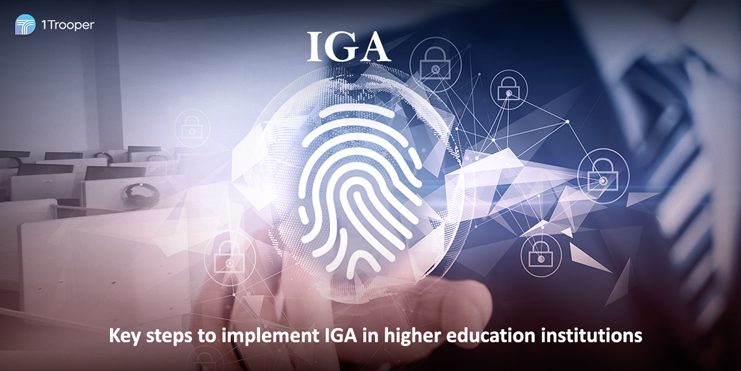
While higher education institutions should maintain high security and compliance, they
face more challenges due to increasing costs and decreasing budgets. Further, a
combination of external and internal threats intends that they must control access to
their applications like never before to prevent compliance risks and data breaches.
Most higher education institutions deploy an Identity Governance and Administration
(IGA) solution to assure they maintain a most secure and compliant environment cost-
effectively.
Benefits of IGA for Higher Education Institutions
Deploying an IGA solution renders the following benefits to higher education institutions:
1) Stronger security: Institutions can automate granting access by linking the IGA
solution to any authoritative source, which can be an employee database or
student record database. These authoritative sources deliver a single source of
truth that aids in reducing the risk of data breaches and makes sure that sensitive
information is accessible only to authorized users.
2) Improves compliance: Having a structured set of automated processes assists
higher education institutions in complying with data protection regulations namely
the General Data Protection Regulation (GDPR) and the Family Educational
Rights and Privacy Act (FERPA).
3) Decreases IT administration requirements: Automating the processes of
granting and revoking the user access (typically using an authoritative source as
mentioned above) states that the IT team can focus on valuable assignments
rather than on monotonous tasks.
4) Enhance student experience: By assisting IT departments to become more
efficient, the IGA solutions help higher education institutions enhance the student
experience by ensuring that they possess the right access to the right systems
since day one and can speedily request and be granted any additional access
due to constantly changing course requirements.
Implementing IGA in Higher Education Institutions
Implementing IGA in higher education institutions is a highly complex process that
demands careful planning and attention to detail. Here are some key steps to implement
IGA in higher education institutions:
1) Higher education institutions must assess their regulatory requirements, security
practices, and user access to sensitive information. This will ensure that the final
IGA implementation effectively meets the institution’s needs.
2) Higher education institutions must build an implementation plan for IGA. This
must involve a timeline for implementation, a budget, and a thorough
understanding of the resources prerequisite to implementing IGA.
3) In addition to implementing the IGA solution, every higher education institution
must ensure that they have a plan for integrating with prevailing authoritative
sources and target systems and also how they will train users and administrators
on using the solution.
By implementing an IGA solution, higher education institutions can lower the
administrative overheads and costs that are associated with managing user access and
enhance their overall efficiency without compromising on security and compliance.




